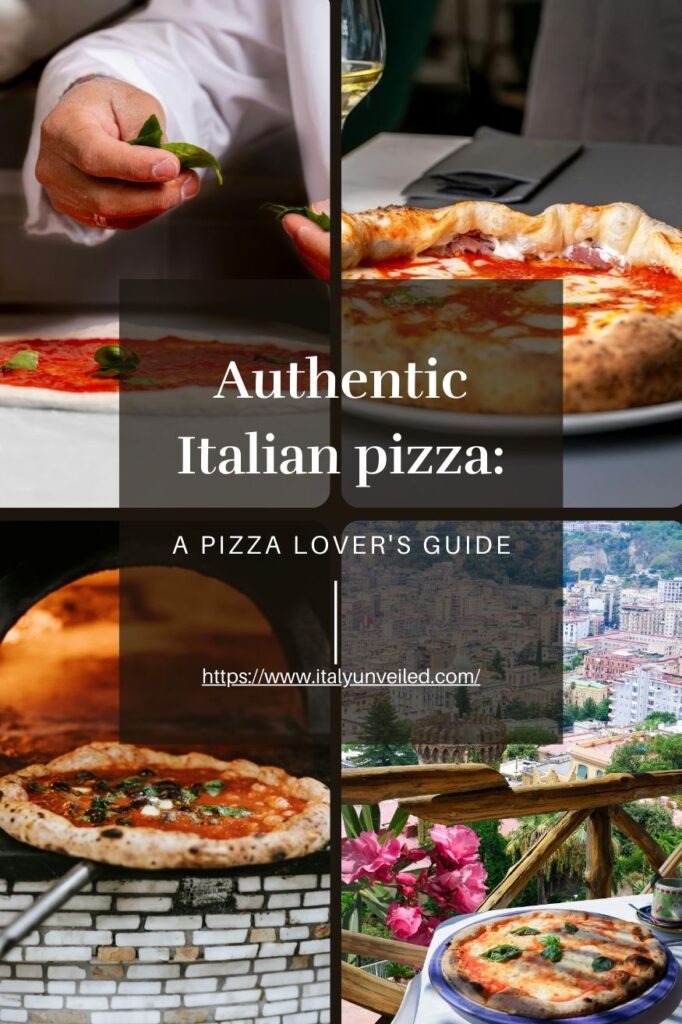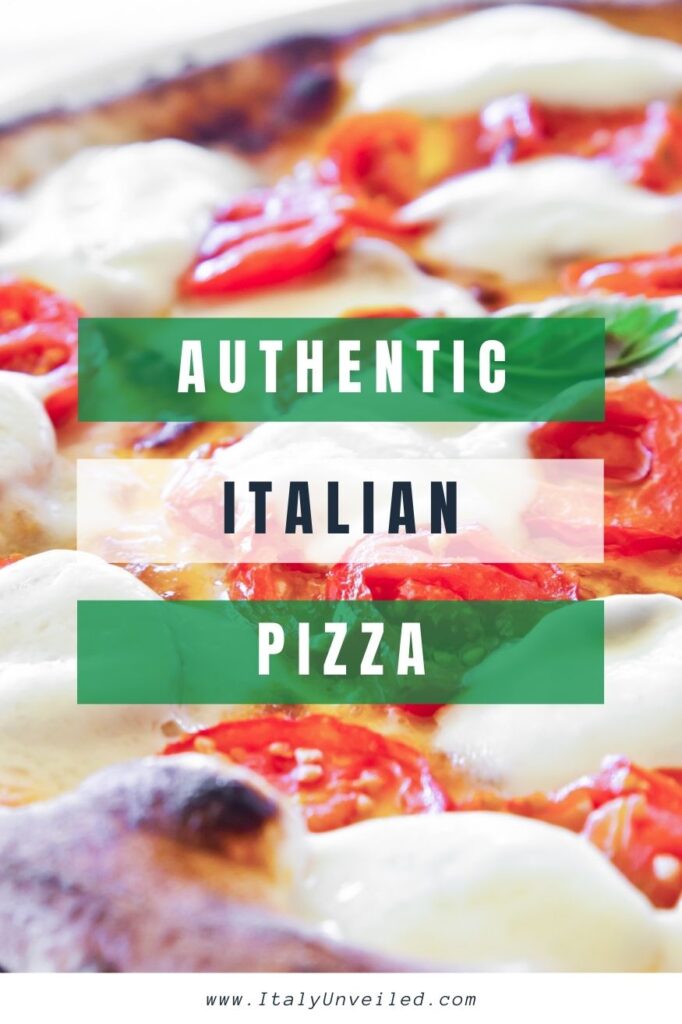Planning a culinary adventure to Italy and curious about authentic pizza? You’re in for a treat! Let’s explore the delicious world of Italian pizza, from its rich history to the best places to savor this iconic dish.
A Pizza Lover’s Guide to the Authentic Italian pizza
Italy is the birthplace of pizza, and experiencing authentic Italian pizza is a must for any food enthusiast. Unlike the American versions with thick crusts and abundant toppings, traditional Italian pizza focuses on quality ingredients and simple combinations that create unforgettable flavors.
According to recent tourism statistics, over 57% of international visitors to Italy cite food experiences as a primary motivation for their trip, with pizza tastings ranking as the most sought-after culinary activity. This isn’t surprising considering Italy welcomes approximately 94 million tourists annually, many of whom make pilgrimages to famous pizzerias throughout the country.
The Origins: Naples, The Pizza Capital
No pizza journey is complete without visiting Naples, the undisputed birthplace of pizza. In the 18th century, Naples gave us the Margherita pizza, supposedly created in honor of Queen Margherita of Savoy with ingredients representing the Italian flag: red tomatoes, white mozzarella, and green basil.
When in Naples, don’t miss L’Antica Pizzeria da Michele, established in 1870 and featured in “Eat Pray Love.” Another iconic spot is Sorbillo on Via dei Tribunali, where generations of pizza-making expertise create unforgettable pies. For first-time visitors, expect to wait in line—these legendary establishments don’t take reservations, but the wait is absolutely worth it! 🍕
Regional Pizza Varieties You Must Try
Italy’s diverse regions offer fascinating pizza variations:
- Roman Pizza (Pizza al Metro): Found throughout Rome, this rectangular pizza is sold by weight and features a thin crispy crust. Perfect for grabbing a quick slice while sightseeing.
- Sicilian Pizza (Sfincione): This thick-crust variety topped with tomatoes, onions, anchovies, and caciocavallo cheese offers a completely different texture experience.
- Pizza Bianca: A “white pizza” without tomato sauce, often topped with olive oil, salt, and sometimes rosemary. In some regions, you’ll find it enhanced with potatoes, truffle oil, or various cheeses.
- Pizza Al Trancio: this thick pizza is sold by the slice or a square piece and feature certain focaccias and breads, topped with Tomato and Mozzarella.It is Very popular in Milan
And let’s not forget—there isn’t just one kind of pizza in Italy. Quite the opposite! You’ll find pizza a portafoglio (folded pizza), a street-style pizza perfect for eating on the go; pizza fritta (fried pizza), a Neapolitan specialty that’s crispy on the outside and soft inside; and of course, the classic pizza napoletana (Neapolitan pizza), soft, round, and slightly charred from the wood-fired oven.
Then there’s pizza sottile e tonda (thin, round pizza) served in sit-down restaurants, pizza sottile e quadrata (thin, square pizza) often found in bakeries or casual spots, pizza al metro (pizza by the meter) for sharing, and pizza al taglio venduta al peso (pizza sold by weight)—a Roman favorite where you choose your slice size. Some regions even offer focaccia tipo pizza (focaccia-style pizza), which blurs the line between bread and pizza with its thick, olive-oil-rich crust.
The bottom line? In Italy, there are dozens of pizza varieties—not just one. Every city and region proudly claims its own style, and each one is worth discovering.
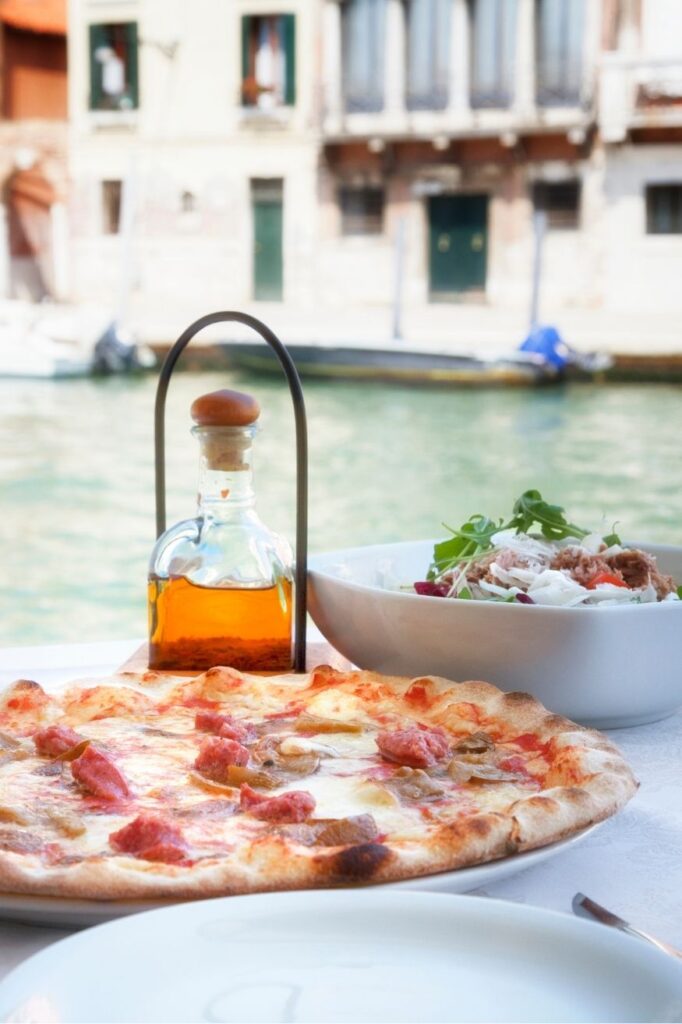
Pizza Etiquette: Eating Like a Local
Want to blend in while enjoying your pizza in Italy? Remember these tips:
Italians typically eat pizza with a knife and fork, especially when dining in restaurants. The pizza arrives unsliced, and you cut pieces as you go.
However, street pizza can be eaten with your hands!
Don’t ask for ranch dressing or pineapple toppings—these American adaptations might earn you some strange looks! The best approach is to try pizzas as they’re traditionally prepared.
In Italy, pizza is often enjoyed as a dinner option, not lunch. Most authentic pizzerias open in the evening, around 7 PM, so plan accordingly.
Beyond Naples: Other Pizza Destinations
While Naples reigns supreme, don’t overlook these pizza hotspots:
Rome: Experience the crispy, thin-crust Roman style at places like Pizzarium Bonci, where creative toppings and rectangular slices create a uniquely Roman pizza experience.
Florence: Gusta Pizza near Piazza Santo Spirito offers traditional Neapolitan-style pizza in the heart of Tuscany—a perfect break from sightseeing.
Bologna: Known for its food scene, Bologna’s Spacca Napoli creates authentic Neapolitan pizzas in this northern Italian city.
DIY Pizza Experiences: Classes and Workshops
For hands-on travelers, participating in a pizza-making class creates lasting memories. In Naples, places like Pizza Experience or Sorrento Cooking School offer workshops where you’ll learn dough preparation, proper stretching techniques, and traditional topping combinations.
Many agriturismo properties (farm stays) throughout Italy also offer cooking classes using ingredients grown on their property, creating a farm-to-table pizza experience that connects you with Italian culinary traditions.
The Perfect Pairing: What to Drink with Your Pizza
Italians typically enjoy beer or wine with pizza. A cold Peroni or Moretti complements the flavors perfectly, while house wines (vino della casa) offer excellent value. In Naples, try the local Lacryma Christi wine from the slopes of Mount Vesuvius for an authentic regional pairing.
Sparkling water (acqua frizzante) is another popular accompaniment, helping to cleanse the palate between bites. Remember that Italians rarely drink soda with meals, so follow their lead for the most authentic experience.
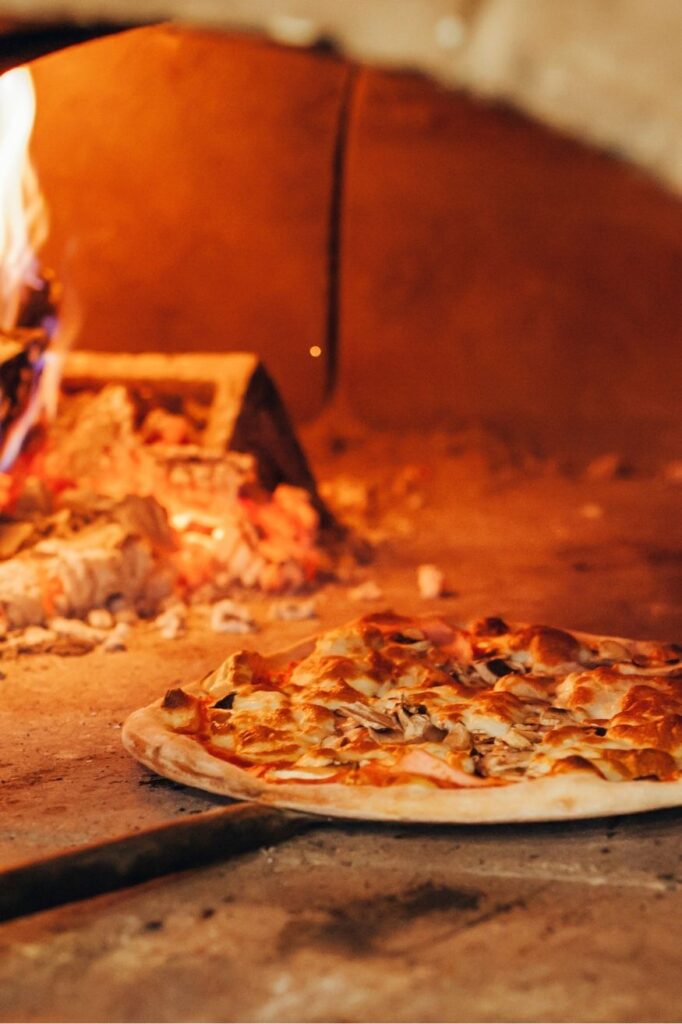
Understanding the Italian Pizza Menu
When reading an Italian pizza menu, remember these classics:
Margherita: The gold standard with tomato sauce, mozzarella, basil, and olive oil.
Marinara: Even simpler—just tomato sauce, garlic, oregano, and olive oil (no cheese).
Quattro Formaggi: For cheese lovers, featuring four different Italian cheeses.
Diavola: Similar to pepperoni pizza but with spicy salami.
Capricciosa: An “everything” pizza with ham, artichokes, mushrooms, and sometimes olives and egg.
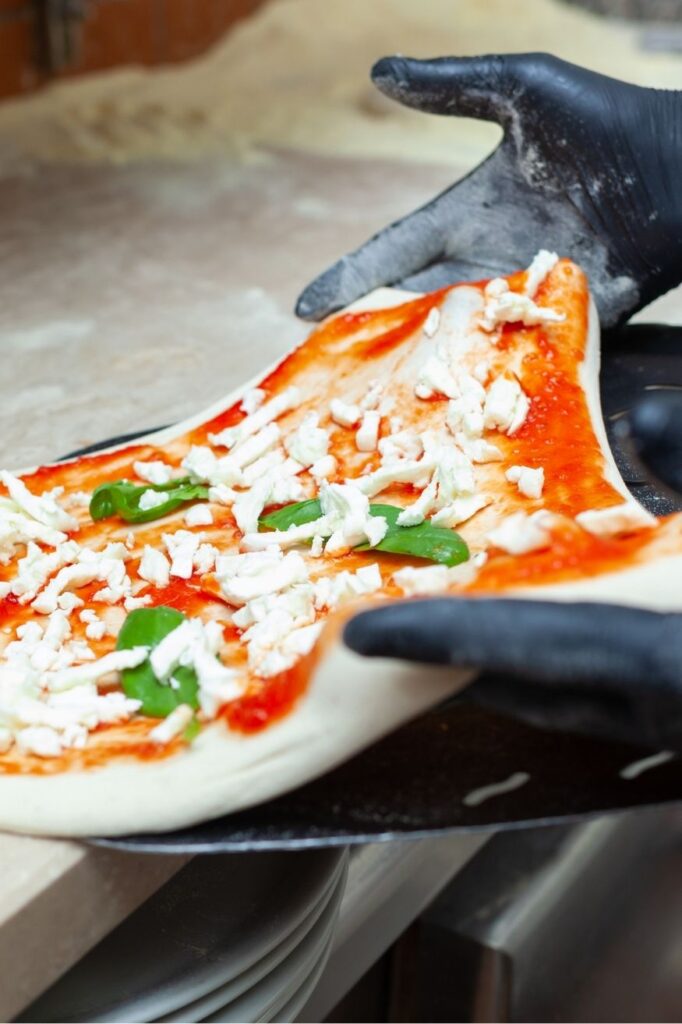
Planning Your Pizza Pilgrimage
For the ultimate pizza experience, consider these tips:
Research authentic pizzerias in advance—the best places are often small, family-run establishments that don’t heavily advertise.
Visit during shoulder seasons (April-May or September-October) when tourist crowds are smaller, making it easier to get into popular pizzerias.
Learn a few Italian phrases like “Un tavolo per due, per favore” (A table for two, please) and “Il conto, per favore” (The bill, please) to enhance your dining experience.
Don’t rush—Italian meals are meant to be enjoyed slowly. Plan at least 1.5-2 hours for a proper pizza dinner.
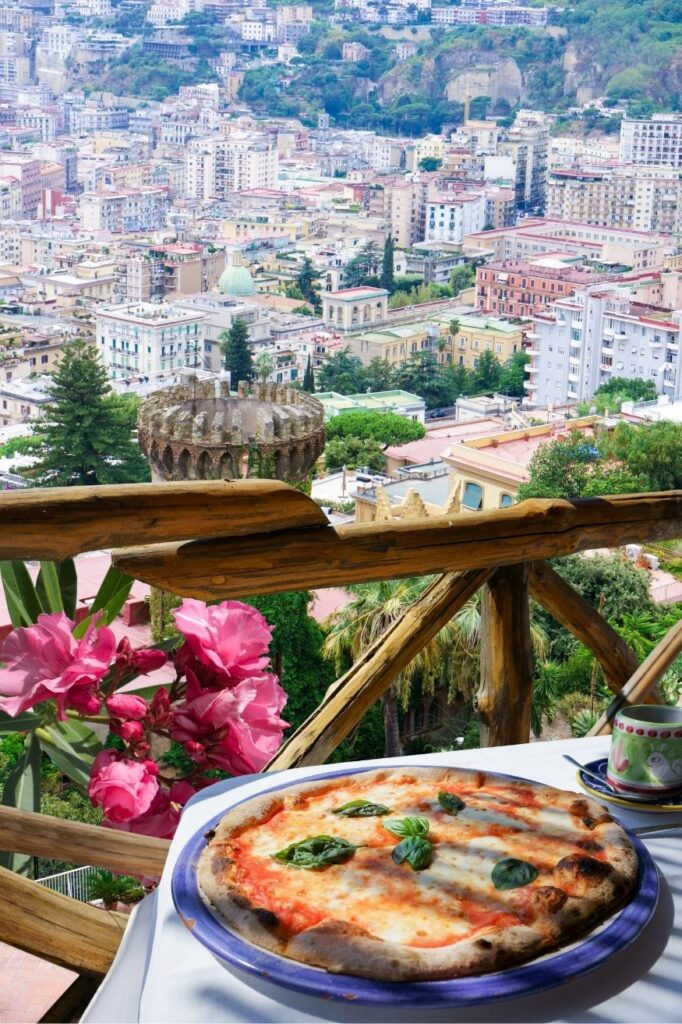
The Science Behind Perfect Pizza
What makes Italian pizza so special? The answer lies in several factors:
Many traditional pizzerias in Italy use wood-fired ovens that reach temperatures of 800-900°F (427-482°C), cooking pizzas in just 60-90 seconds. This high-heat cooking creates the characteristic charred spots on the crust while keeping the center soft.
Italian flour (tipo 00) has lower protein content than American all-purpose flour, creating a more tender crust. Combined with long fermentation periods (sometimes 24-48 hours), this produces the perfect balance of chewiness and crispness.
Italian tomatoes, particularly San Marzano varieties grown in volcanic soil near Mount Vesuvius, provide the sweet-acidic balance that defines authentic pizza sauce.
Bringing Italy Home: Recreating the Experience
After your Italian pizza journey, you’ll inevitably want to recreate the experience at home. Consider bringing back:
Italian tipo 00 flour, which is increasingly available in specialty stores but makes a noticeable difference in dough texture.
A small bottle of Italian olive oil—the finishing drizzle that elevates homemade pizza.
If customs allows, vacuum-sealed packages of Italian cheese like buffalo mozzarella
In Italy, pizza isn’t just food—it’s a cultural institution!
In 2017, UNESCO recognized the art of Neapolitan pizza-making (“pizzaiuolo”) as an Intangible Cultural Heritage of Humanity, acknowledging its importance to Italian identity.
When you are on an Italian pizza journey, you’re not just satisfying hunger but participating in a centuries-old tradition that connects you to generations of Italian culinary expertise.
So please savor each bite, appreciate the craftsmanship, and embrace the joy of discovering authentic Italian pizza in its homeland.
Buon appetito! 🇮🇹
Pin This Article

